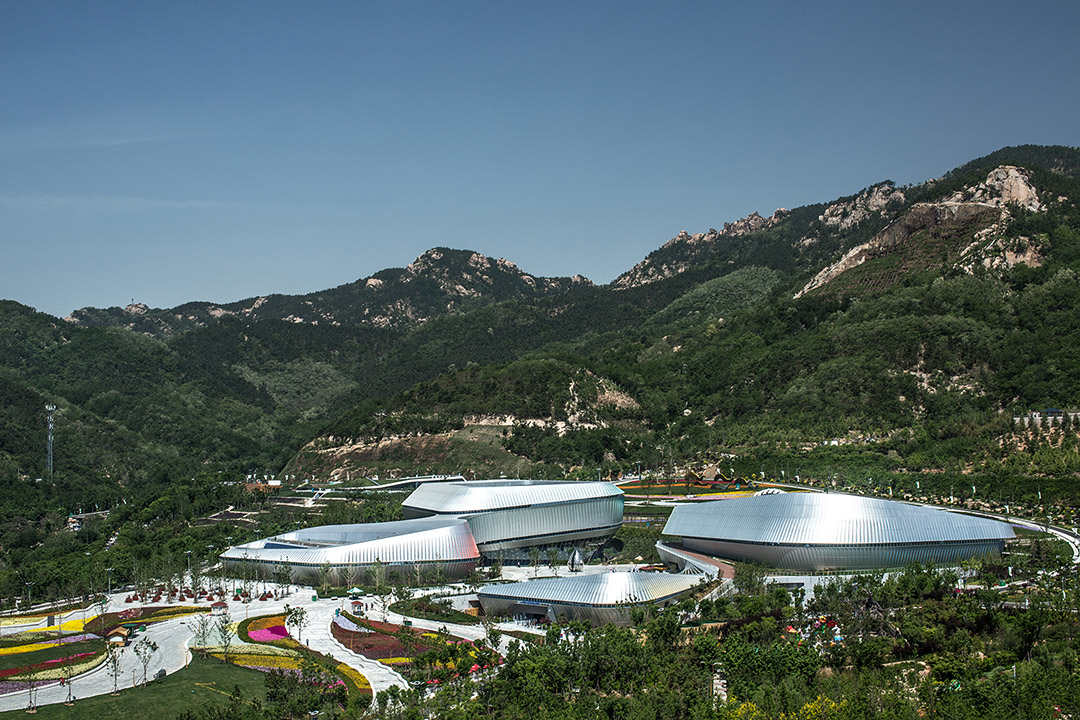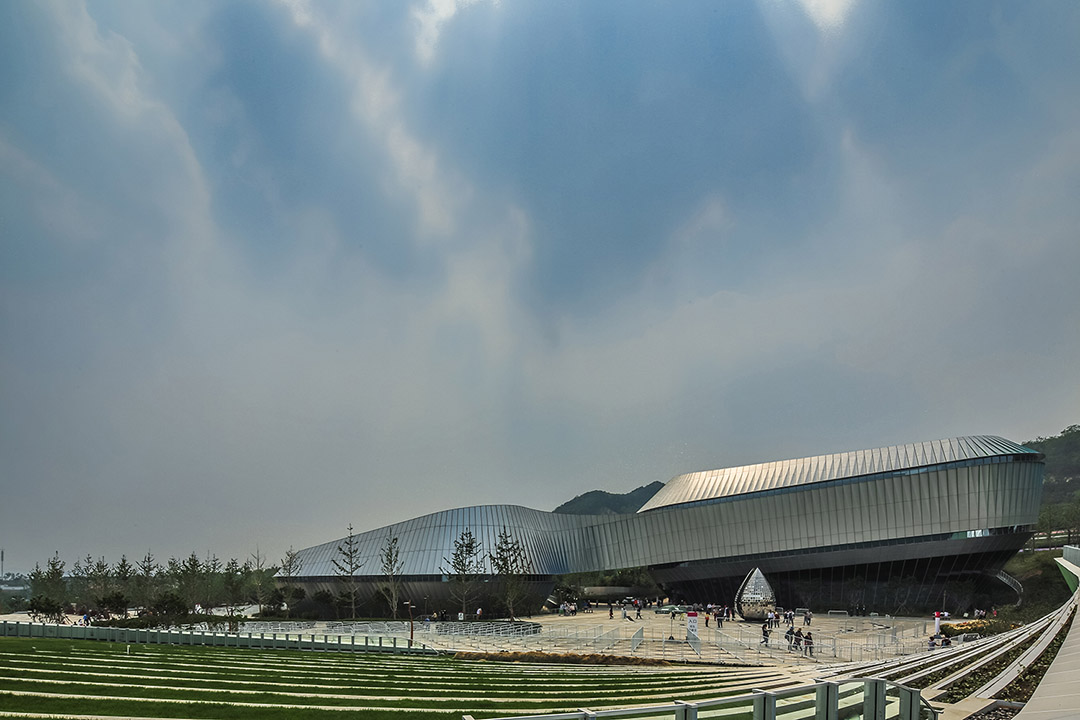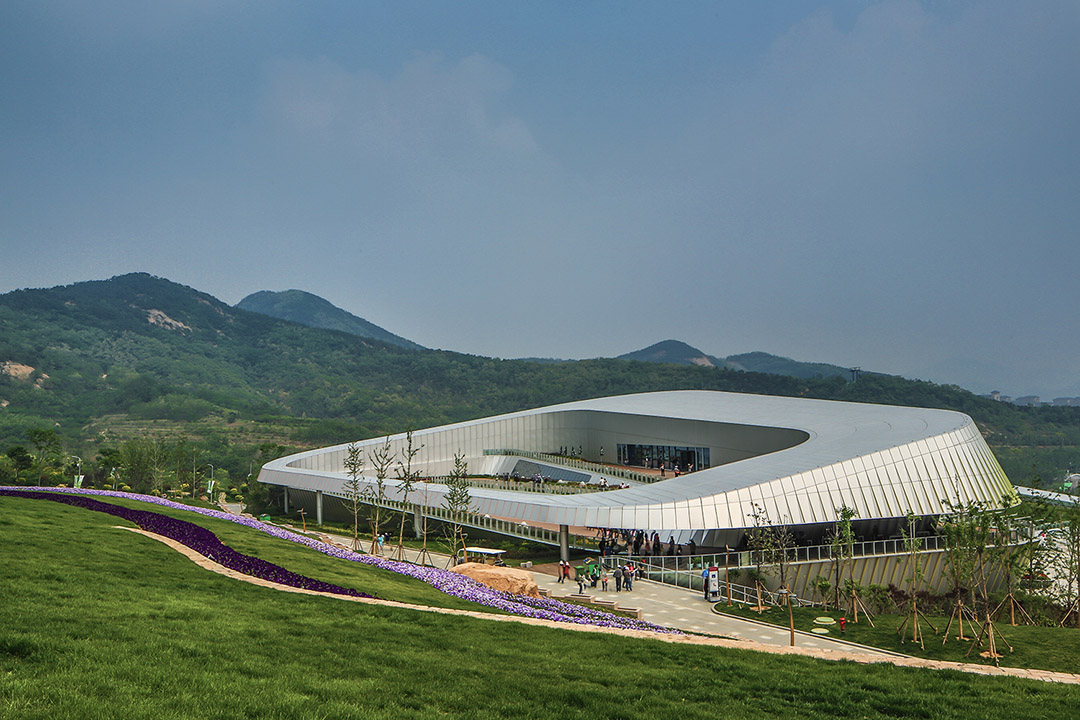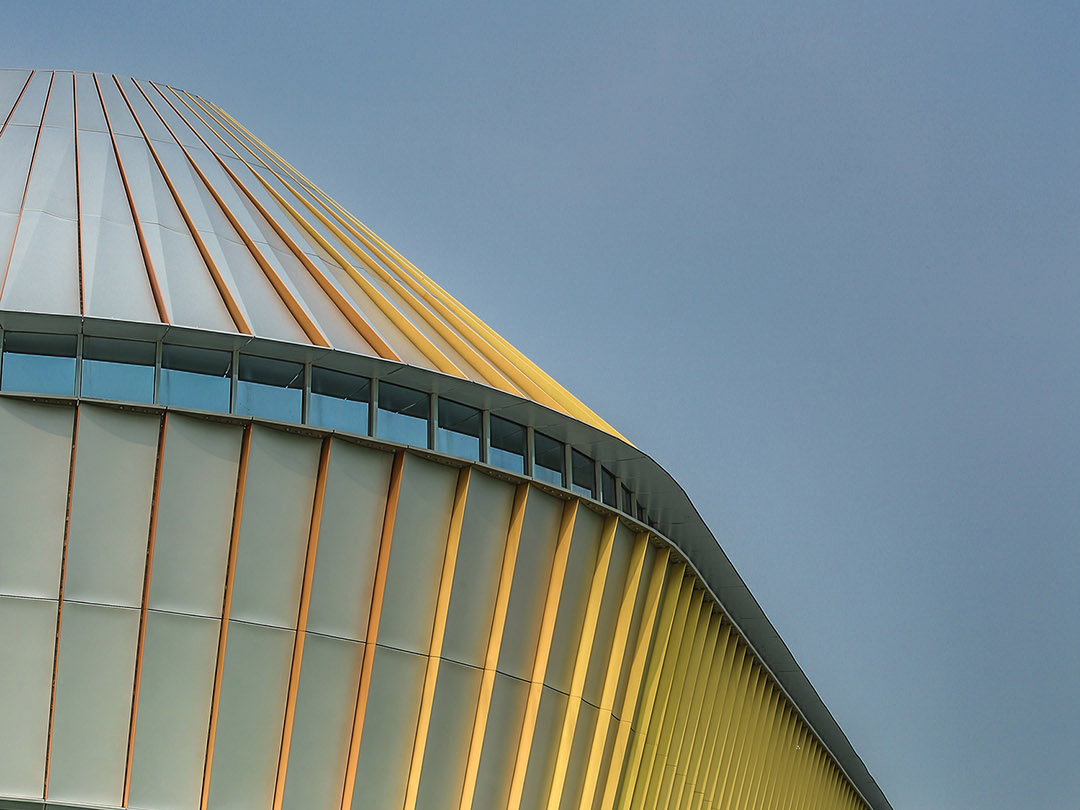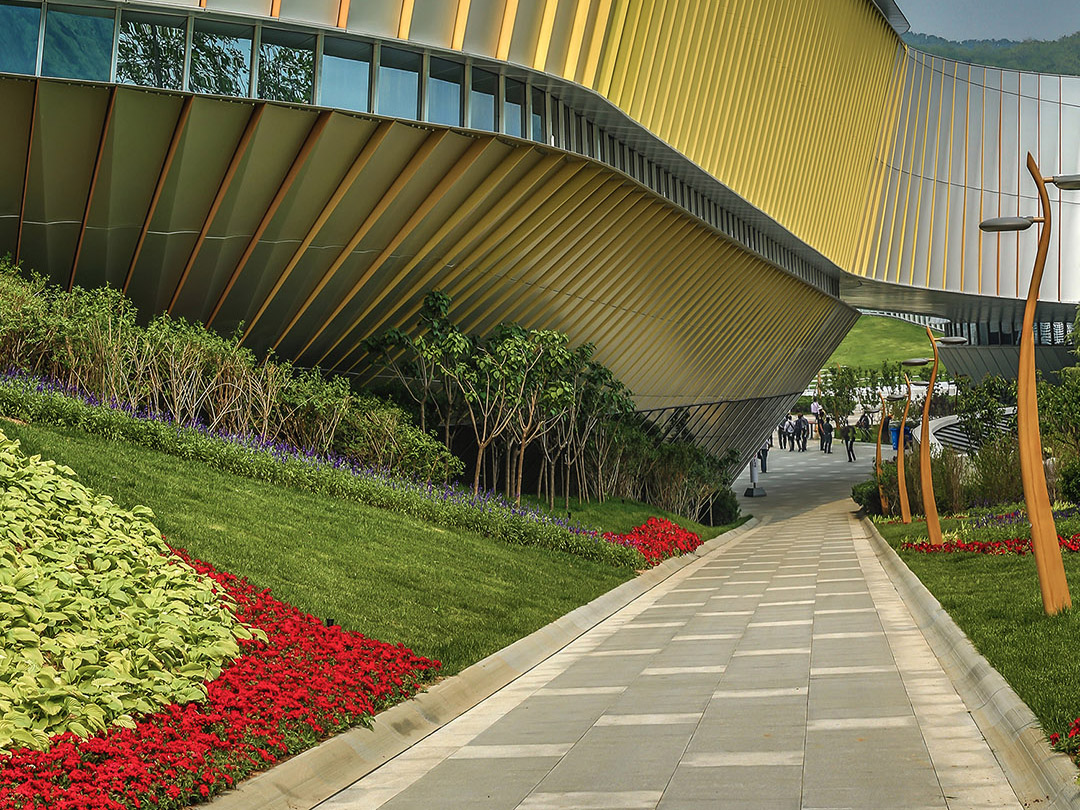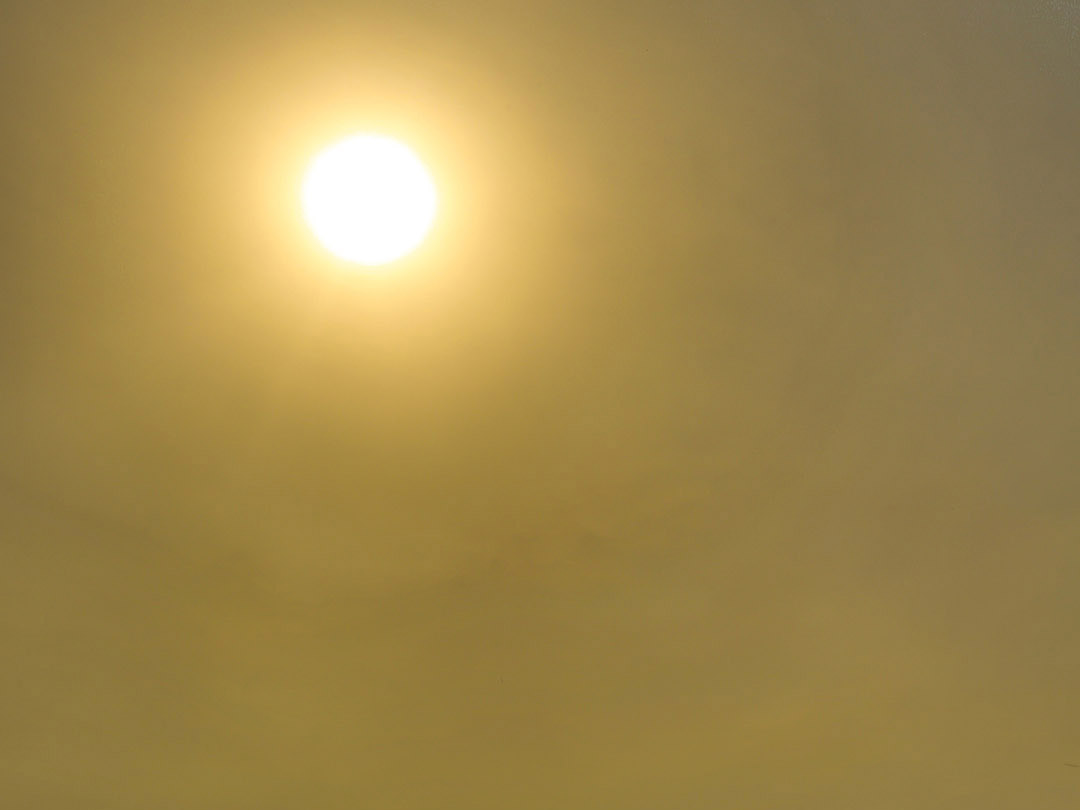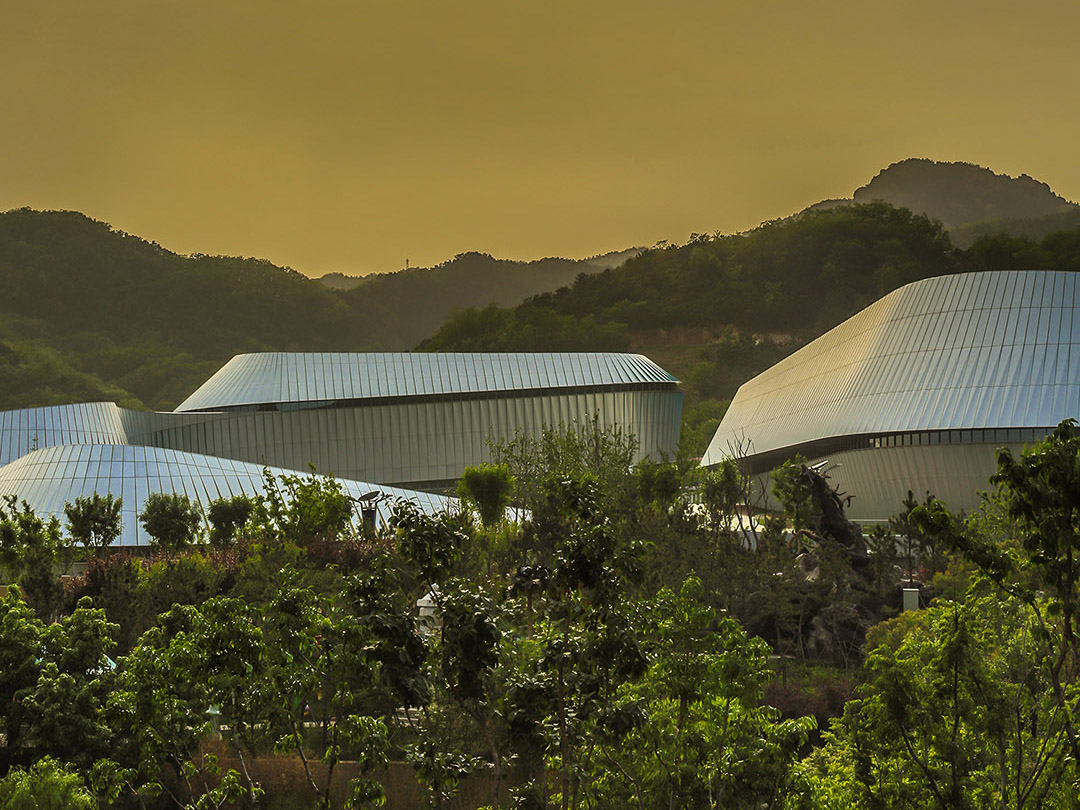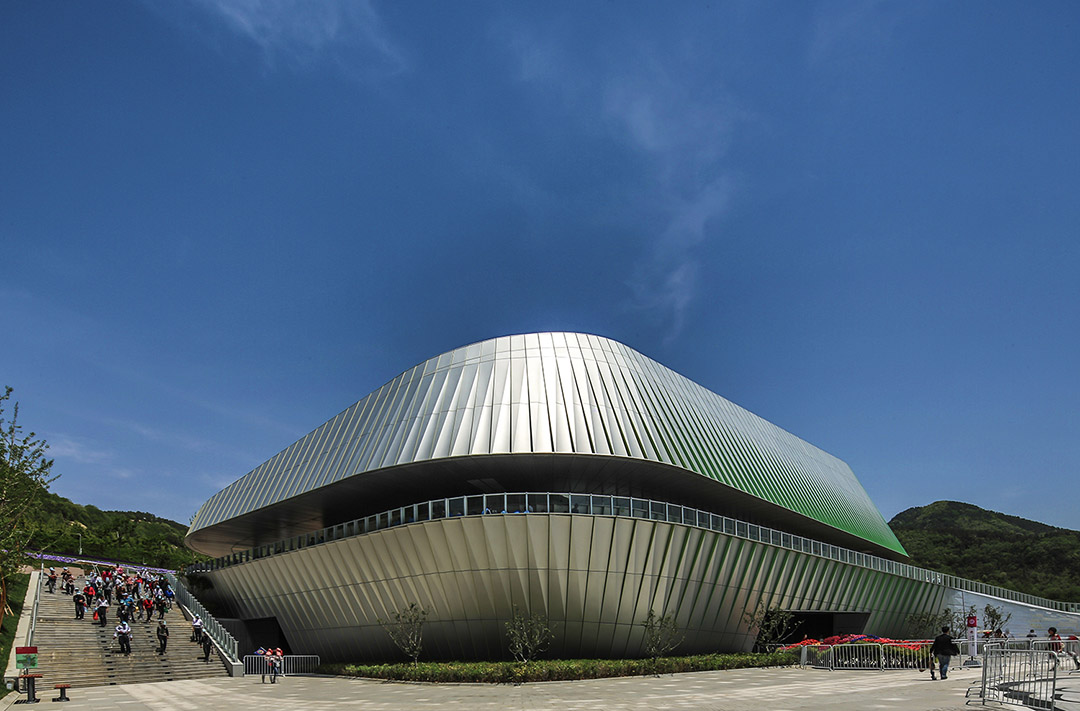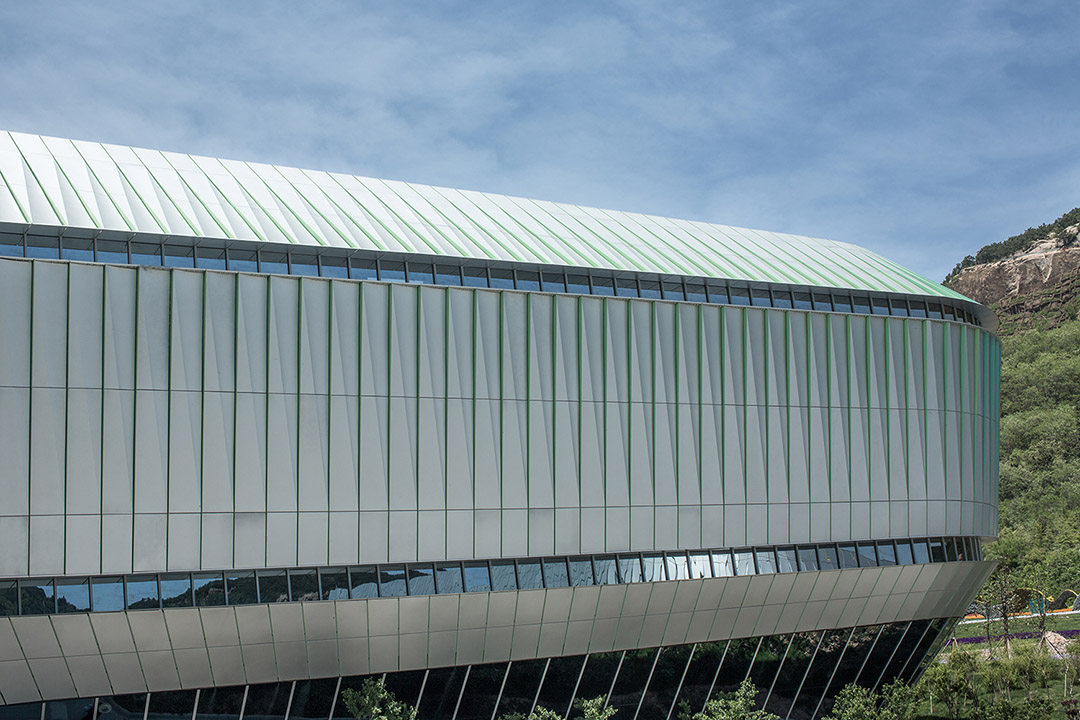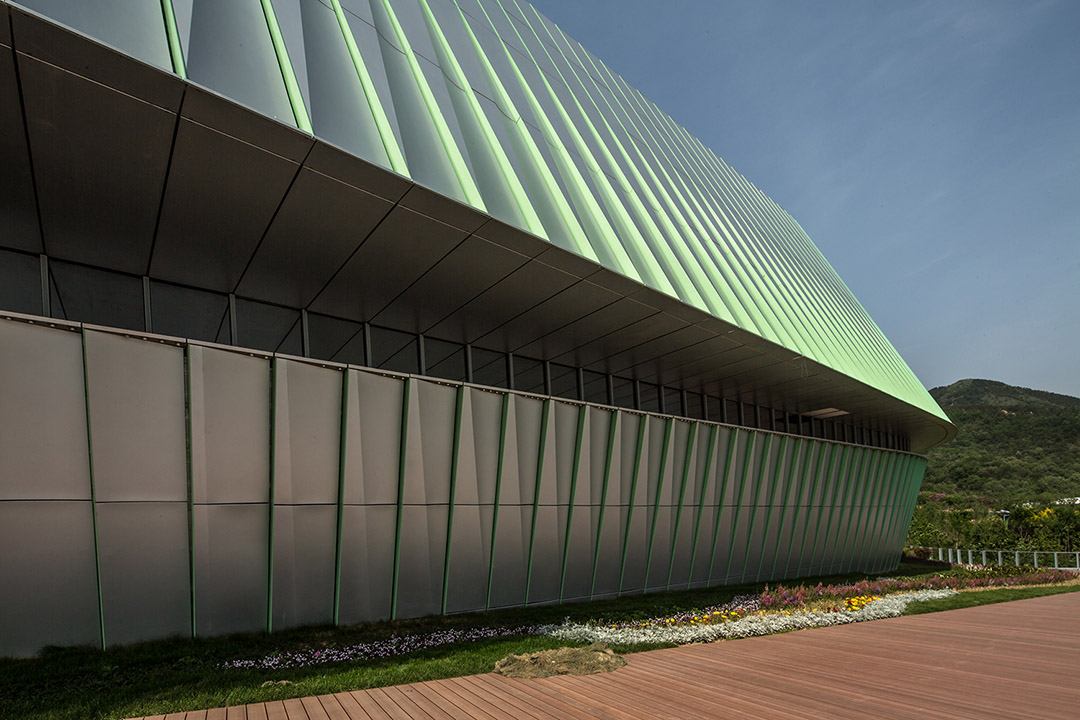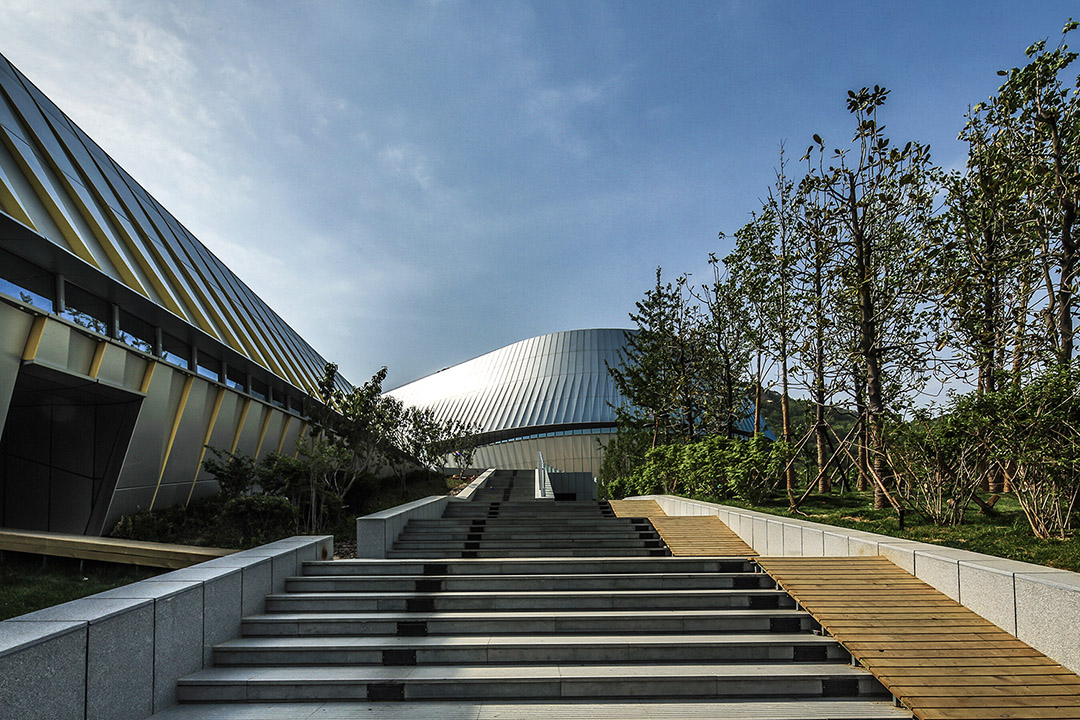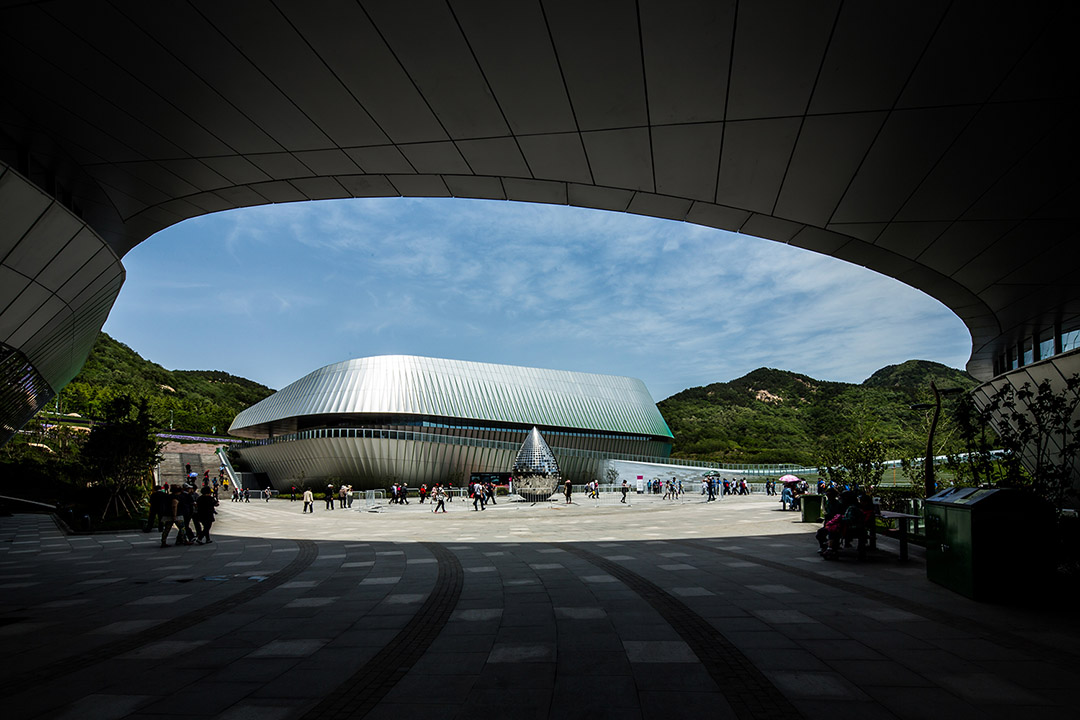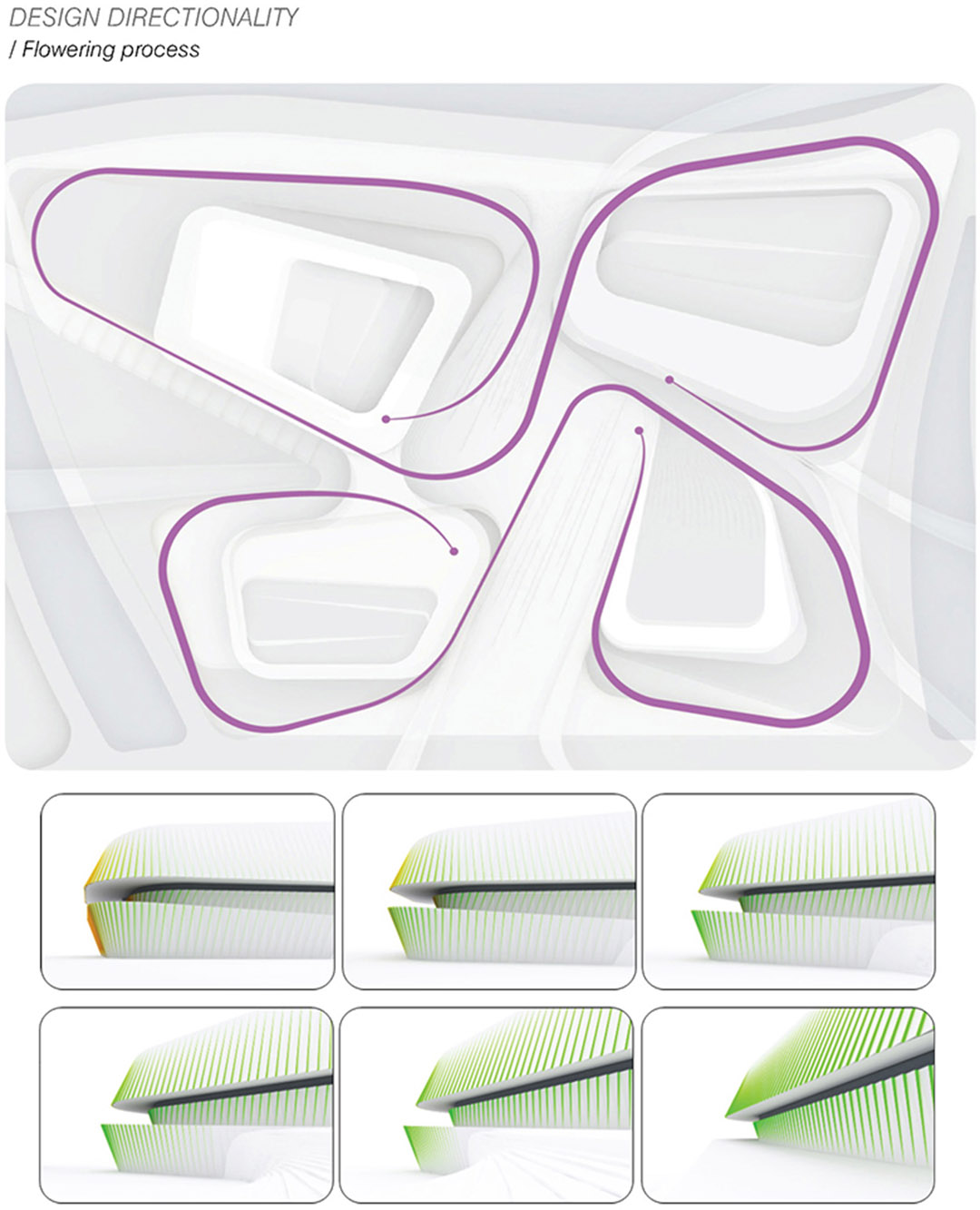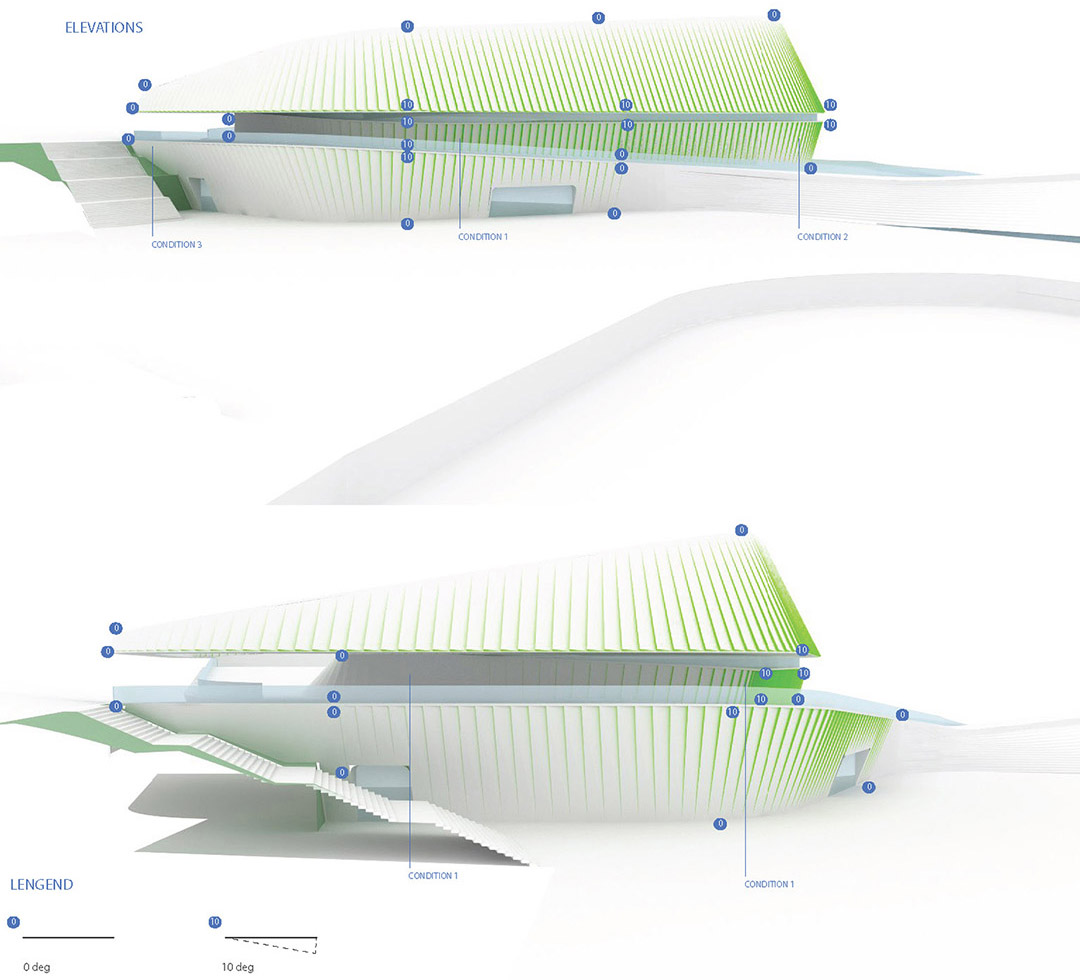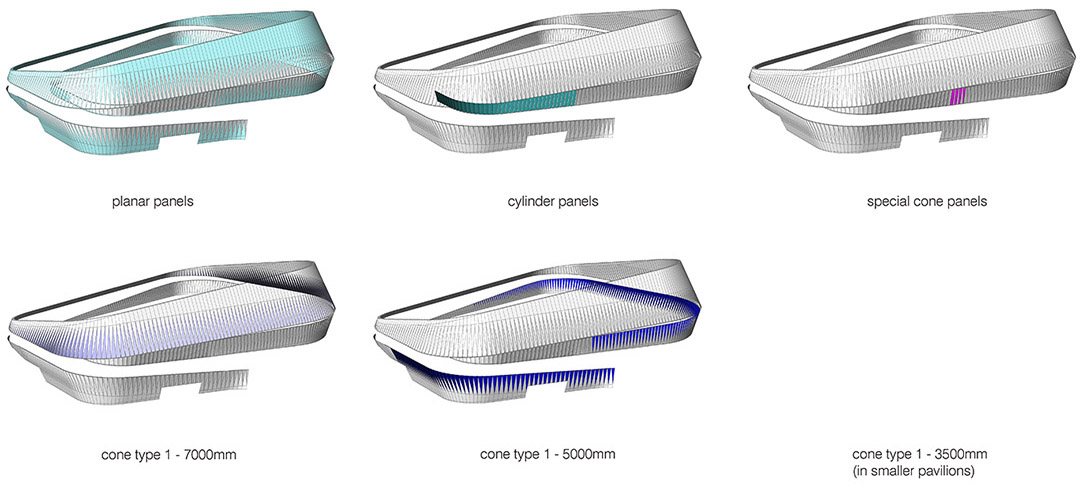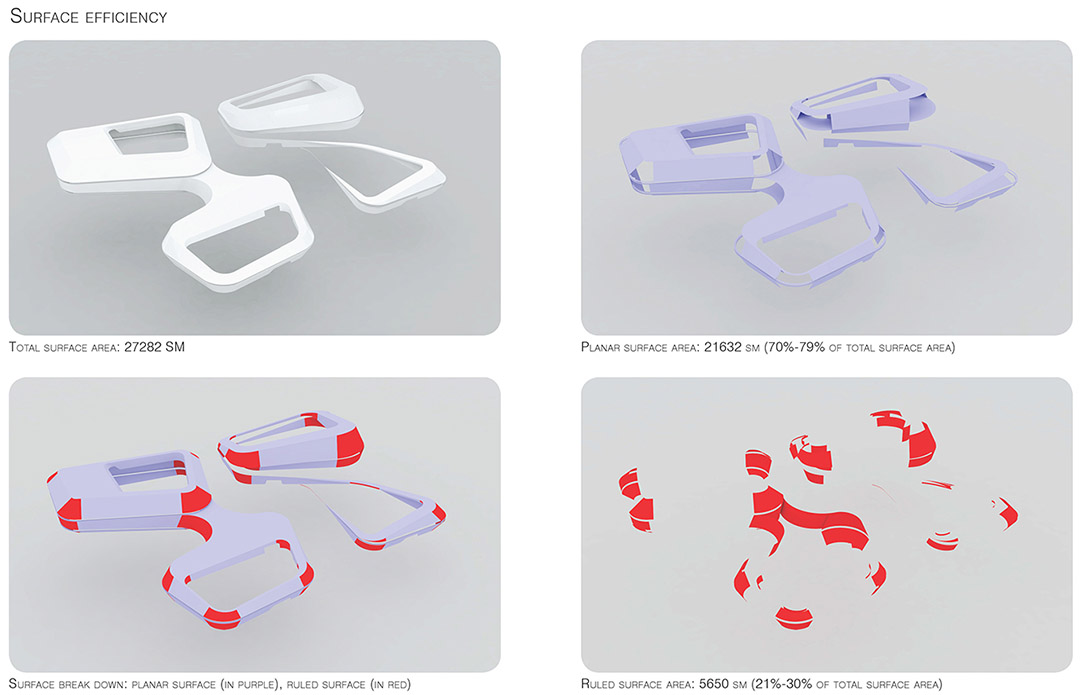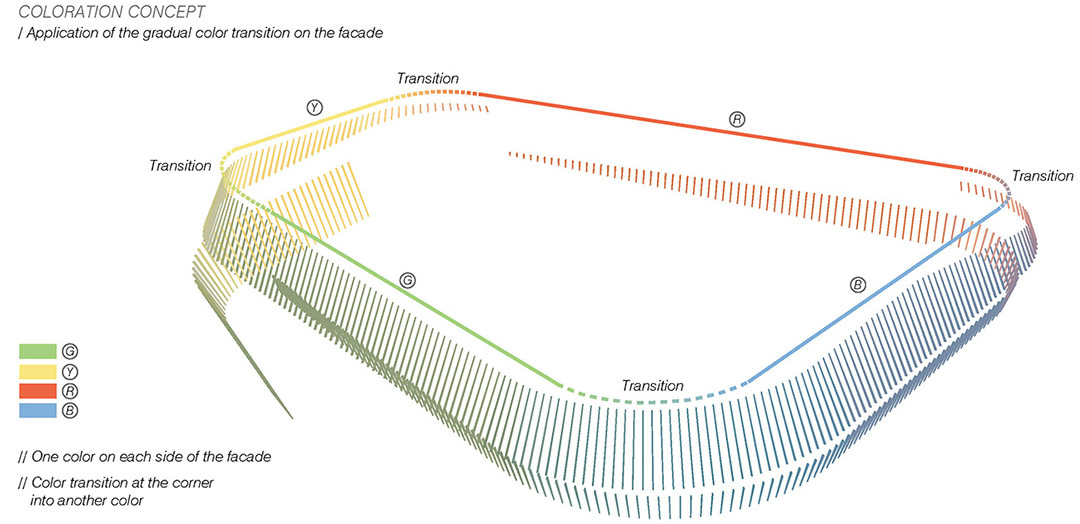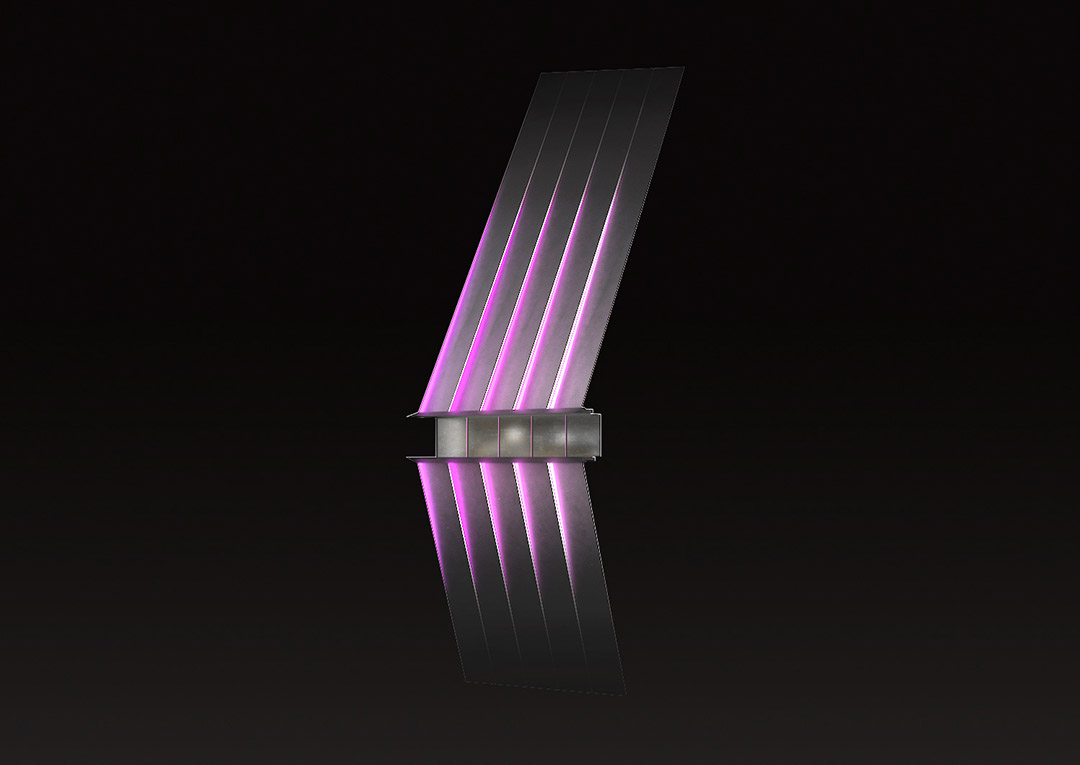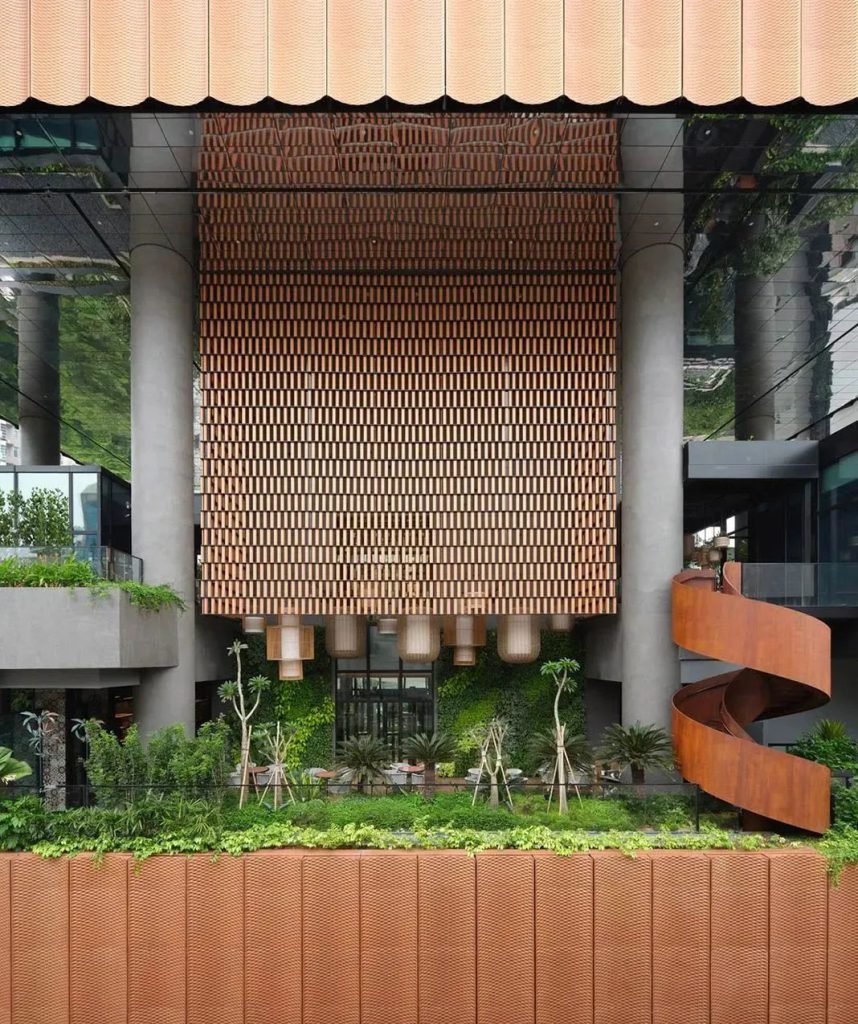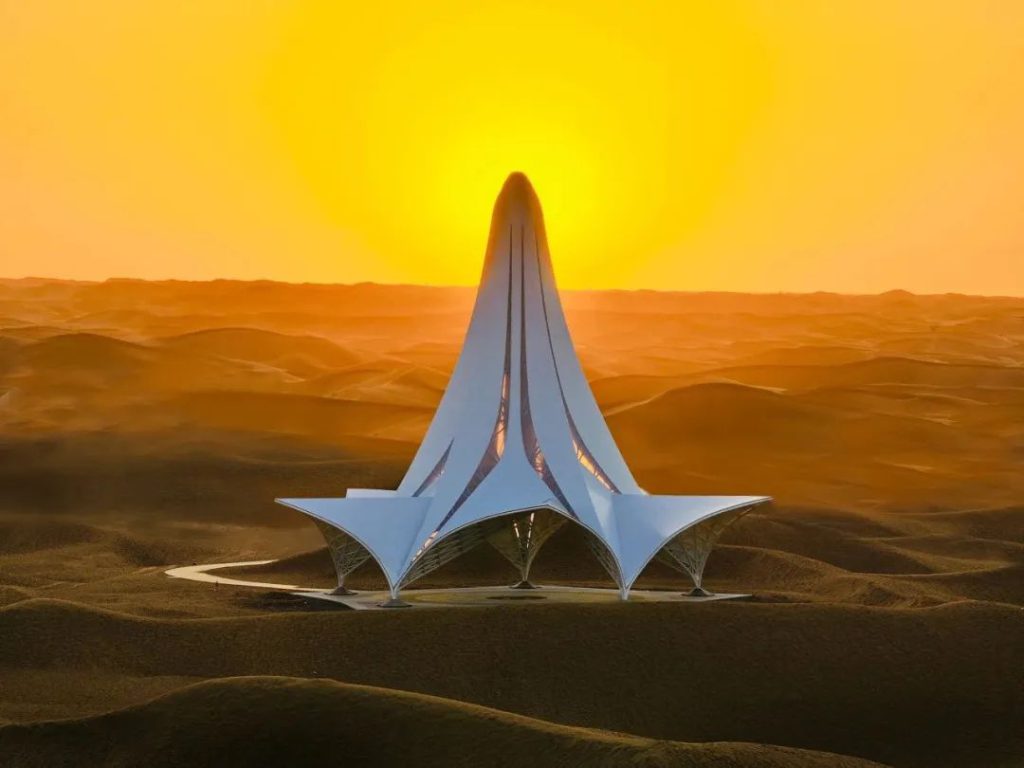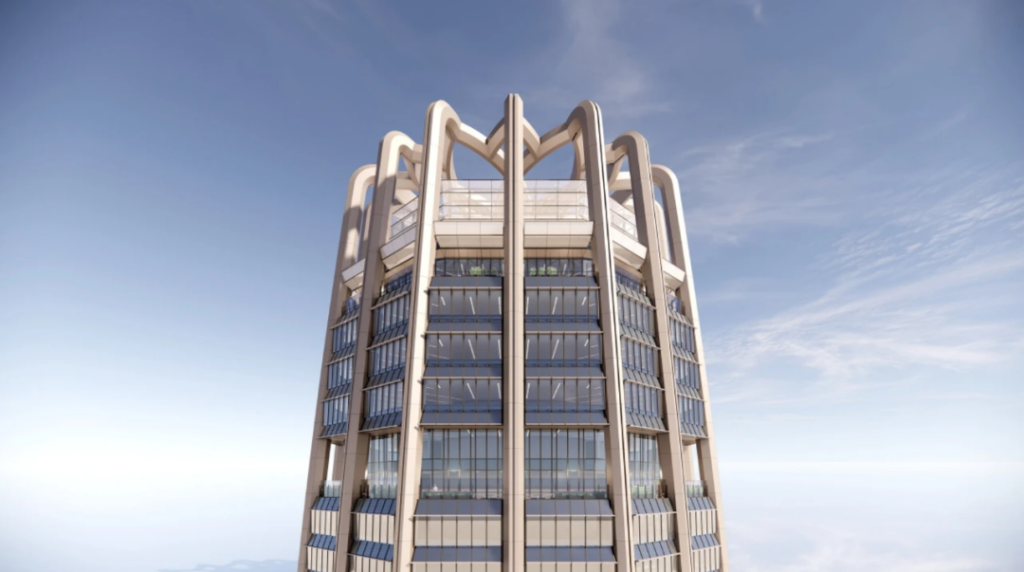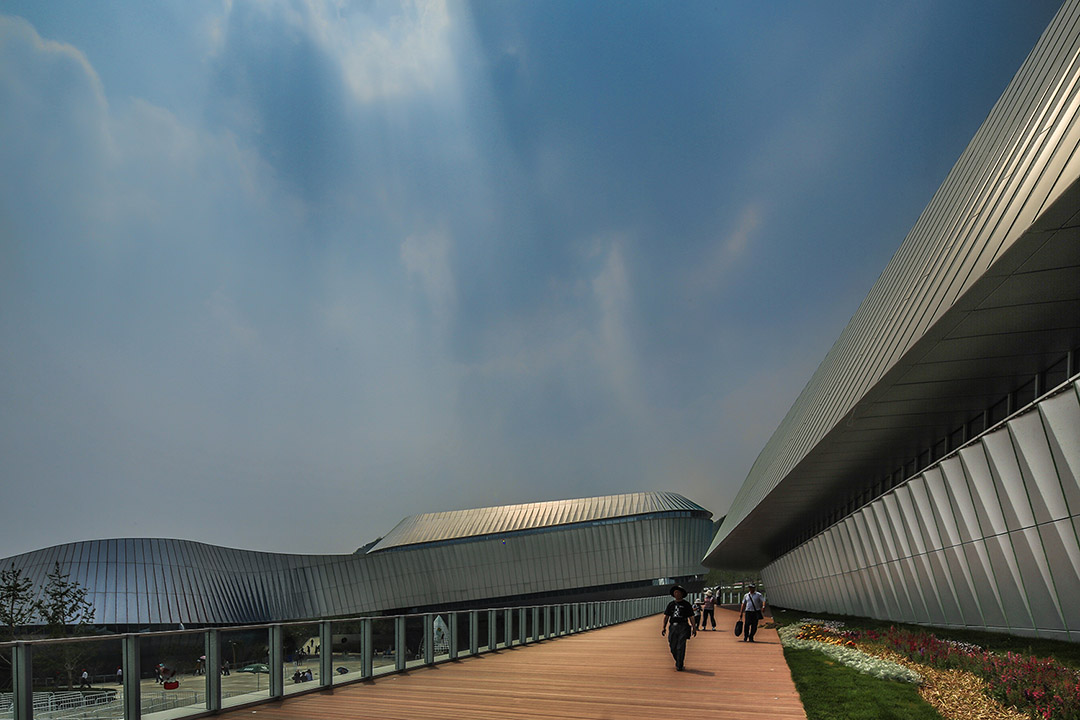 2014世界园艺博览会在中国青岛举行(2014年4月至10月),预计将会吸引国际游客1,500万人。此次博览会以“让生活走进自然”为主题,旨在促进文化、科技和园艺的交流。
2014世界园艺博览会在中国青岛举行(2014年4月至10月),预计将会吸引国际游客1,500万人。此次博览会以“让生活走进自然”为主题,旨在促进文化、科技和园艺的交流。
Ben van Berkel / UNStudio’s Qingdao World Horticultural Expo Theme Pavilion completed Following selection in the 2011 competition UNStudio’s World Horticultural Expo Theme Pavilion in Qingdao has been realised.
The World Horticultural Expo 2014 takes place the Chinese city of Qingdao (from April to October 2014) and is expected to attract 15 million international visitors. The main theme of the expo is ‘From the Earth, For the Earth’ and aims to encourage the exchange of culture, technology and horticultural knowledge.
UNStudio将物流学、空间组织、专业类型学、未来的灵活使用性、功能规划、外观、使用舒适性和可持续性等专业知识运用到了主题馆的设计中。
In its design for the Theme Pavilion UNStudio combines expert knowledge of logistics, spatial organisation,specialised typology, future flexible usability, function programming, façade intelligence, user comfort and sustainability.
Ben van Berkel指出:“主题馆既突出于周围景观又能和谐地融于其中。主题馆的构造与周边群山相互呼应,精心设计的馆顶象征着高原,每一个部分都有着不同的倾斜度和阶地状构造,组合在一起呈现出一幅与周围风景融为一体的全景图。
Ben van Berkel: “The architecture for the Theme Pavilion overflows and interacts with the surrounding landscape. The forms of the pavilion buildings respond to the nearby mountains, with their carefully composed rooftops acting as plateaus, each addressing a different portion of the master plan by different inclination and terracing and providing panoramic views which extend far into the surrounding landscape.”
面积为28,000平方米的主题馆包括主大厅、表演厅、会议中心和媒体中心。主题馆的设计平面图借用了青岛市市花”月季“的形状。内外通道将四个馆区,或者说“四片花瓣”连接起来,在中间形成了一个广场,成为参观者的“舞台”:一个被周围不同高度的视角环抱的动态焦点。
The 28,000 square meter Theme Pavilion comprises the main Expo hall, a grand performance hall, a conference centre and a media centre. The architectural design gesture for the pavilion is borrowed from the shape of the Chinese rose – the city flower of Qingdao – and converted into the floor plan layout of the design.The four pavilion volumes or ‘petals’ are connected by internal and external walkways and frame a central square which becomes a ‘stage’ for the visitors: a dynamic focal point surrounded by viewpoints on varying levels.
Ben van Berkel说:“融入主题馆设计中的花瓣概念传达着沟通交流的信息。与自然界相似的是,建筑中花开的过程同样吸引着人类的感官,暗示着建筑对外开放,鼓励公共交流。
Ben van Berkel: “The flowering out concept is integrated into the design of the Theme Pavilion as gesture of communication. Similarly to how it occurs in nature, the action of flowering out in architecture attracts and invites through the senses. It alludes to the notion that a building can open
itself up and encourage public interaction.”
主题馆作为举办月/季主题活动的平台,象征着春花、夏荫、秋实、冬绿。融入周围环境的”彩虹丝带“提供了世博会的通道和基础设施。颜色的理念进一步运用到了主题馆垂直闭合的铝制面板外观中。在不同的视角下,四种主题颜色”绿、黄、橙、蓝“在垂直面板上若隐若现。
The Theme Pavilion operates as the platform for monthly programmed and seasonally themed activities, featuring flowers in spring, shading in summer, fruits in autumn and greens in winter.
‘Rainbow Ribbons’ provide the routing and infrastructure for the expo and permeate the surrounding landscape. This colour concept is further reflected in the facade elements which are constructed from vertically folded aluminium panels. The four theme colours (green, yellow, orange and blue) are applied along the lengths of the vertical folds, appearing and disappearing depending on the viewpoint.
世界园艺博览会将覆盖约500万平方米的范围,100多个国家共同参与,日接待量将高达6000多人次。此外,世博会还会有效促进青岛市其它活动的举办,从整体上提高城市品质。
The World Horticultural Expo will cover nearly 5 million square meters, encourage the participation of more than 100 countries and is expected to attract more than 6,000 visitors daily. In addition the Expo will function as a catalyst for other undertakings and initiatives in the city of Qingdao to improve the city quality as a whole.
世界园艺博览会后,景观艺术世博会主题公园将成为生态旅游的新聚点,将青岛旅游业的核心从观光旅游转为休闲旅游。在组织机构的共同合作下,UNStudio的设计考虑了通过将主题馆改造成酒店、配备会议和教学设施等,灵活地将其转变为生活圈的可能性。作为设计的重要部分,主题馆未来的实用性已渗入设计的核心。
Following the World Horticultural Expo 2014, the landscape art themed expo park will become a new venue for eco-tourism, which will shift the focus of Qingdao’s tourism from sightseeing to leisure. Together with the organisers, UNStudio has incorporated a possible future lifecycle into the design of the Theme Pavilion by allowing a transformation of the buildings into a hotel building, accommodating conference and teaching facilities. As part of the design process, the future use of the Theme Pavilion is therefore incorporated into the DNA of the design.
Qingdao World Horticultural Expo Theme Pavilion, Qingdao, 2011-2014
Client: Office of 2014 Qingdao World Horticultural Expo Executive Committee
Location: Qingdao, China
Building surface: 35.000m2
Building volume: 168.000m3
Building site: 35.000m2
Programme: Main Expo Pavilion including Expo Hall, Grand Theater, Conference Center and Media Hub
Status: Realised
Credits:
UNStudio: Ben van Berkel, Hannes Pfau, Gerard Loozekoot with Markus van Aalderen, Joerg Petri, Milena Stopic, Yu-Chen Liu and Cong Ye,
Irina Bogdan, Xing Xiong, Maud van Hees, ShuoJiong Zhang, Philipp Mecke, Maya Alam, Junjie Yan, Gilles Greis, Subhajit Das, Erwin
Horstmanshof, Faiz Zohri, Andrew Brown, Patrik Noomé, Amanda Chan, Nanang Santoso
Competition stage
Landscape Architect: !melk landscape architecture PC, New York
Theater Advisor: Theateradvies bv, Amsterdam
Structure: Arup, Amsterdam
MEP: Arup, Hong Kong
Construction stage
Structure engineering: Qingdao Architectural Design Institute (QUADI)
MEP engineering: Qingdao Architectural Design Institute (QUADI)
Façade engineering: Senyang Yuanda Aluminium Industry Engineering CO.,LTD-Special Project Group.
Lighting designers: Tsinghua Tongfang
Local Architect: Qingdao Architectural Design Institute Corporation
Photo © Edmon Leong
MORE: UNStudio
